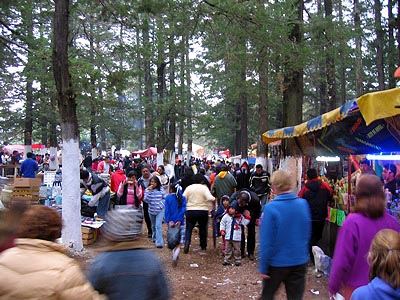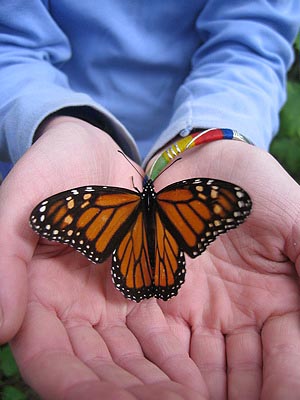
Every fall millions of monarch butterflies migrate 4000 km from the US and Canada to a couple of tiny mountaintops in eastern Michoacan. If you take all of the monarchs from the US and concentrate them in a couple of little winter colonies, the density of butterflies becomes staggering. There are four reserves about 3 hours east of Morelia, so after the butterflies arrived this fall (on opening weekend) we took a weekend trip to see them at the reserve "El Rosario".



We hiked up a steep but short trail through a mix of pines, oaks and fir trees to the spot where the butterfly colonies were clustered. On the day we visited it was cold and grey so the monarchs did not fly around much at all. But we could see the tight masses of monarchs covering the upper branches of many of the fir trees. Why they chose those particular trees, instead of one of the many others we had passed, is a mystery to me.
All of the dark gray tips of branches are clusters of butterflies. The undersides of their wings are gray, not orange, making them pretty indistinct in the trees. They huddle together for warmth, entering a type of torpor (their metabolism slows). After flying up to 4000 miles to get to these forests, they don't eat until spring. They'll fly around on warm days and drink water from puddles, but there are few-to-no flowering plants at this elevation from Nov-Feb, so the butterflies have no nectar to drink. Come Feb-March, they will mate: the males will then die and the females (after feeding as much as they can) start the long trip back to the southern United States. Upon reaching milkweeds there, they will lay their eggs and their larvae will feed on the leaves of milkweed. The original butterflies from Mexico then die. This next generation will mature and some will fly further north, laying eggs on milkweeds they find there. This can be repeated even one more generation, with butterflies making it up into New England and Canada. This is all in one summer. Come fall, all adults start their flight south to these forests in Mexico. None of the butterflies that flew north from Mexico are still alive. How the adults "know" to migrate and exactly where to migrate is unknown.
For a wonderful description of this complex life cycle and great stories of the scientists who study them, read "Four Wings and a Prayer" by our friend Sue Halpern.
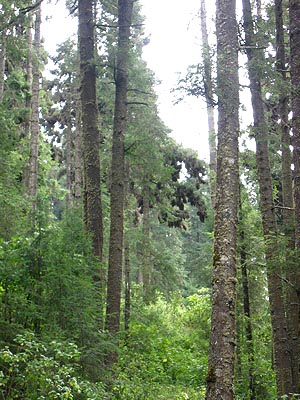
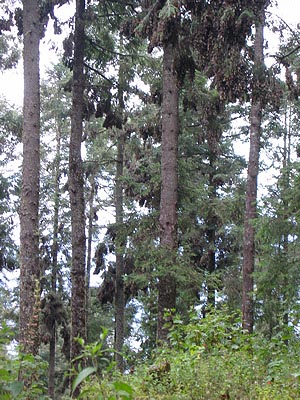
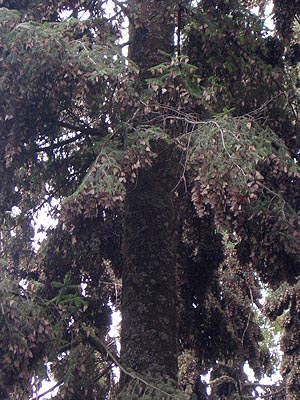

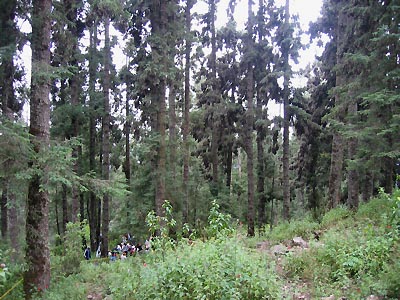
Although seeing the butterflies was wonderful, BEING in this forest was the greatest reward: tall majestic trees, cool air, nice trails. It's something we don't get much of here in the city.
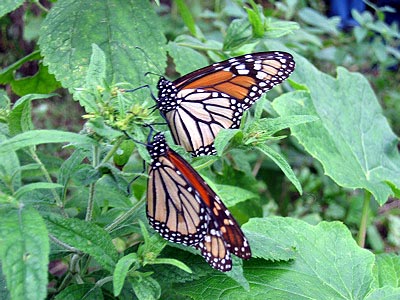
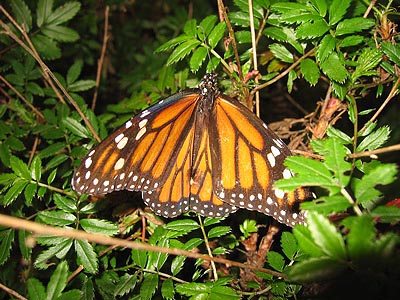


Tlalpujahua
We stayed in the small town of Tlalpujahua. It is about an hour away from the butterflies, but we had heard that it was one of the more interesting towns in the state. It is one of the few Michoacan towns designated a "pueblo magico" by the national tourism office. It was indeed a lovely town.
There are several old churches in town-- this is the main church near the top of the hill.
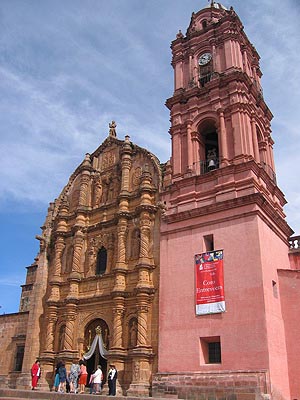
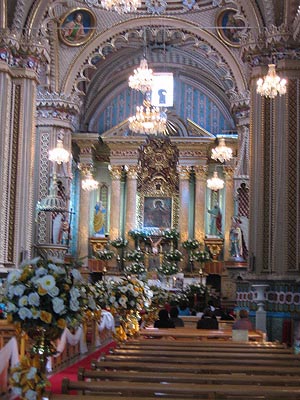
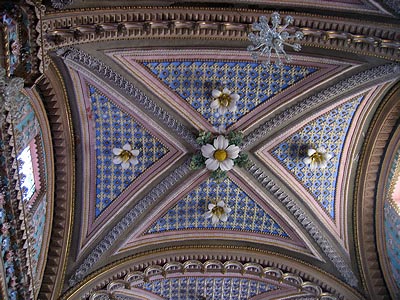
The towns most famous export are the millions of hand-blown and painted Christmas ornaments. In mid-November the (commercial) Christmas sprit was in full swing and it seemed like every other building had "esferas navideñas" for sale. We weren't quite sure what to make of all that at first, but after we watched a man blow the glass and after we saw all of the variations in the designs on the ornaments in the various shops, we decided that we had to have one of these, and two of those, and pretty soon we were carrying around a couple of big boxes!
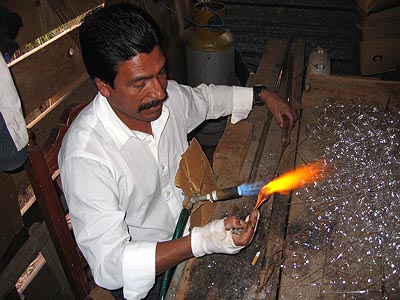
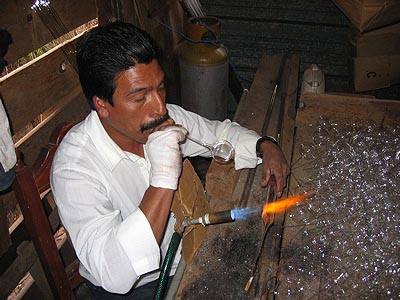

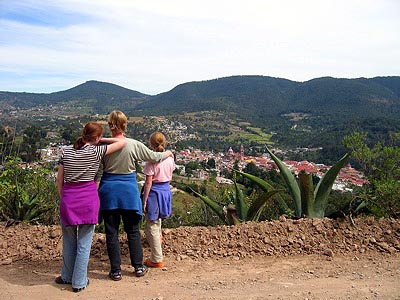
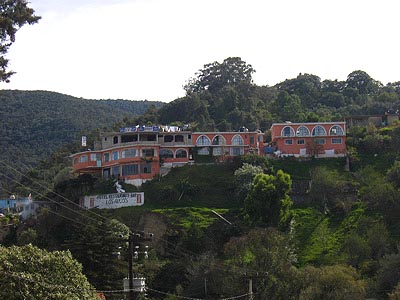
Our hotel was perched on a hillside overlooking the town.
We are finding that our most delicious and memorable meals are on street-sides. Here we are having just arrived in town by bus - we found a man with a cart selling barbecued pork and lamb. You buy the meat by the kilo and it comes served with freshly made tortillas and several types of salsa. Put some meat on a tortilla, add some salsa and chopped onion, squeeze a little lime juice on it, fold it in half and start eating. These were truly delicious. There were some tables by the cart but they were full of customers, so we stood around with half a dozen other people and ate our tacos.
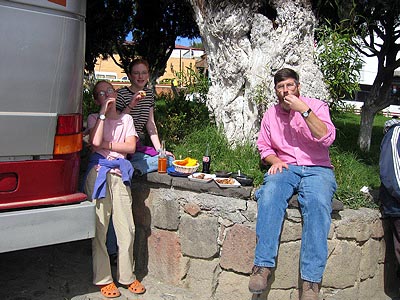
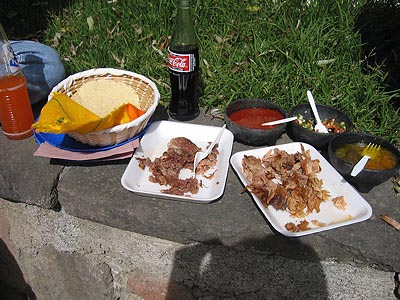
Under the bus on the left was a shy skinny dog. We fed her scraps from our plates and were happy to see a man toss her a bone (after he had chewed off most of the meat!). She was a well-fed pup!
Some sights from town: nice stonework on the wall of a statue store; a wall mural of the water cycle (!).
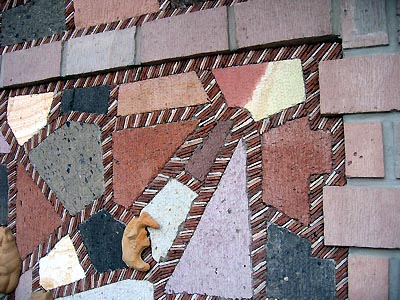
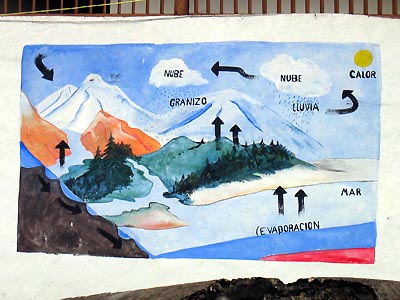
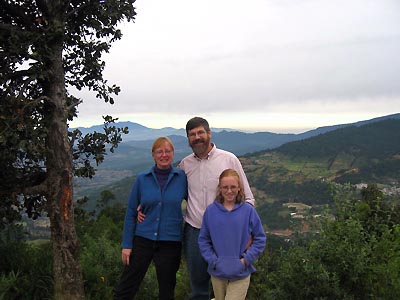
The weekend we were there was also the town's big fiesta, the "fiesta del campo de gallo". On Sunday the town treks up to a park on the ridge above the town for what appears to be a big picnic. We arrived late to the party (after visiting the butterflies) but we never quite caught on to the appeal. Maybe it is because we were late, or because it was a very cold day, or because we simply didn't belong there, but we decided we would just head back to town. It was surprising because we had met some other tourists earlier who said they make a point of coming to this particular fiesta every year. The fiesta also featured a couple of big concerts on Saturday and Sunday night that kept us awake until the not-so-wee hours of the morning.
